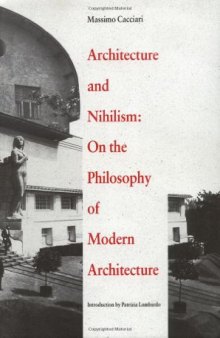 جزییات کتاب
جزییات کتاب
Massimo Cacciari, one of the most influential social philosophers in Italy today, is the founder of the trend of criticism known as "negative thought" that focuses on the failure of traditional logic to explicate the problems of modernity. This book, which introduces his writings to an English-speaking audience, provides a striking social and philosophical account of the twentieth-century metropolis. Patrizia Lombardo's extensive introduction situates Cacciari's thought within the milieu of Italian political activism and philosophy between the 1960s and the 1980s, from his collaboration on the leftist journal Contropiano to his long association with Manfredo Tafuri.Cacciari studies the relation between philosophy and modern architecture and applies the thinking of avant-garde architects, artists, and writers to the social and political problems raised by technological society. He begins by defining the modern metropolis, using the terms and ideas of Georg Simmel and Max Weber, but revealing where their frameworks are limited. He then examines the work of Adolf Loos and other architects and designers in early twentieth-century Vienna, showing how their architecture and criticism expose the alienation and utopianism in notions of the organic city. Cacciari demonstrates how architecture intersects with the city and the state but also with the interior of the private dwelling and with its resistance to the external world. Bringing together philosophy, sociology, urbanism, labor history, economics, and aesthetics, he helps us comprehend via these disciplines a crucial period in the history of modernity."An outstanding original work of scholarship and polemic."—John Paul Russo, University of Miami"Cacciari approaches his 'mission to demystify' with an appealing blend of stern sobriety and tentative delicacy."—Philip Tabor, Architectural Review"An original presentation which not only illuminates the narrative of modern architecture and planning but, even more importantly, serves as a demonstration of a genuinely intellectual architectural discourse."—Thomas A. Markus, Times Higher Education Supplement



 دانلود کتاب
دانلود کتاب

 جزییات کتاب
جزییات کتاب





 این کتاب رو مطالعه کردید؟ نظر شما چیست؟
این کتاب رو مطالعه کردید؟ نظر شما چیست؟
